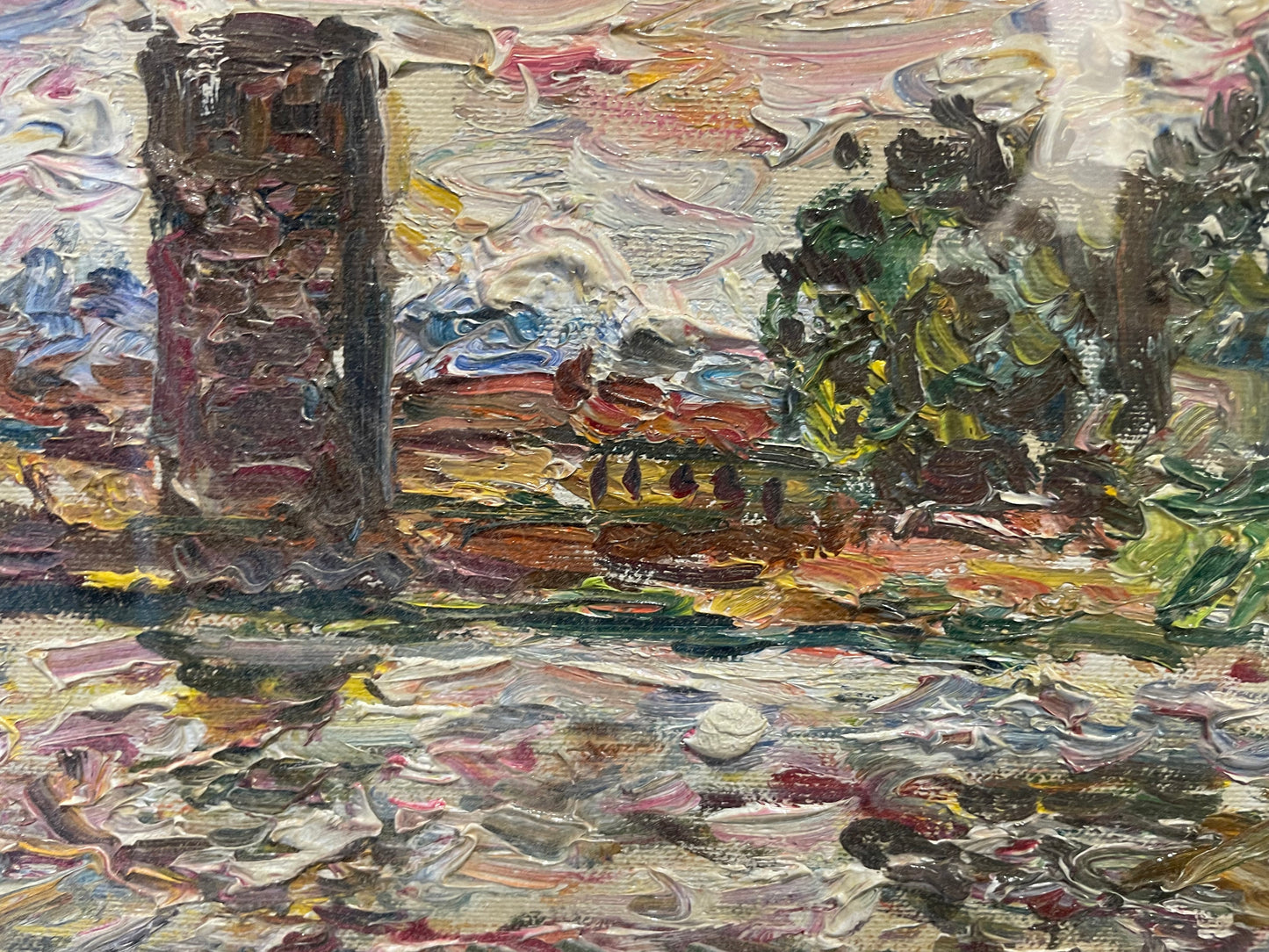@alina.malova
Guido Borgianni. View of Florence with part of medieval walls: Santa Rosa tower and river Arno. Circa 1960.
Guido Borgianni. View of Florence with part of medieval walls: Santa Rosa tower and river Arno. Circa 1960.
Couldn't load pickup availability
View of Florence with the medieval tower of Santa Rosa
Signed lower right
With frame: H 58 cm × W 48 cm
View of the Arno River with the Torrino di Santa Rosa, one of the best-preserved sections of Florence’s medieval walls, most of which were demolished in the 19th century when the city became the capital of the Kingdom of Italy. The painting, built up through dense, broken brushstrokes, reveals Borgianni’s unmistakable technique: thick layers of colour vibrating with light, capturing the shifting reflections of the river and rooftops to create a living, poetic image of the city.
He portrays Florence not as a backdrop but as a living presence, observed and experienced day after day on the spot.
Guido Borgianni was one of the major figures of Italian figurative painting in the mid-20th century. Few artists were as thoroughly Florentine as he was: in many homes of the city one can still find his views of the Arno, sunsets, and roofs of the Oltrarno, as well as human figures engaged in everyday life — craftsmen, market women, children playing by the river — capturing the simple vitality of Florence itself. His art has become part of the city’s collective memory.
Born in New York to a Florentine father and an American mother, Borgianni moved to Florence in 1916. He studied at the Accademia di Belle Arti under Felice Carena, debuting in 1937 at the Tuscan Sindacali exhibitions and holding his first solo show the following year at the Galleria Cavalensi e Botti. After the war he participated in the IV Quadriennale di Roma (1946) and won the National Fiorino Prize in 1950.
During the 1950s he travelled to Venice and Paris, deepening his contact with Impressionism and modern painterly expression. In 1956 he was invited to the Venice Biennale and elected to the Accademia delle Arti del Disegno in Florence. In 1957 he received First Prize at the Portrait Exhibition at the Casa di Dante, and in 1971 held a solo exhibition in Bielefeld, Germany. A large retrospective was dedicated to him in 2001 at the Accademia delle Arti del Disegno.
Borgianni’s painting, deeply rooted in Tuscan tradition, draws from Impressionism, Divisionism and Expressionism while remaining faithful to reality. His dense, layered brushwork forms vibrating surfaces where light itself becomes the subject. Florence remained the centre of his art: views of the Arno, medieval towers, gardens and squares became a poetic chronicle of the city.
He painted outdoors, placing his easel among passers-by, observing every change of light and season. Recognized as one of Florence’s most authentic interpreters, he was praised by Giulio Carlo Argan and remembered by Eugenio Montale and Vasco Pratolini. His works are now held in the Galleria d’Arte Moderna at Palazzo Pitti, the Museo del Novecento, and the Vasari Corridor in Florence, as well as the Galleria d’Arte Moderna in Rome and the Kunsthalle Bielefeld in Germany.
Frame in gilded wood with a white patinated inner border.
Materials
Materials
Dimensions
Dimensions
Care information
Care information












Image with text
Pair text with an image to focus on your chosen product, collection, or blog post. Add details on availability, style, or even provide a review.











